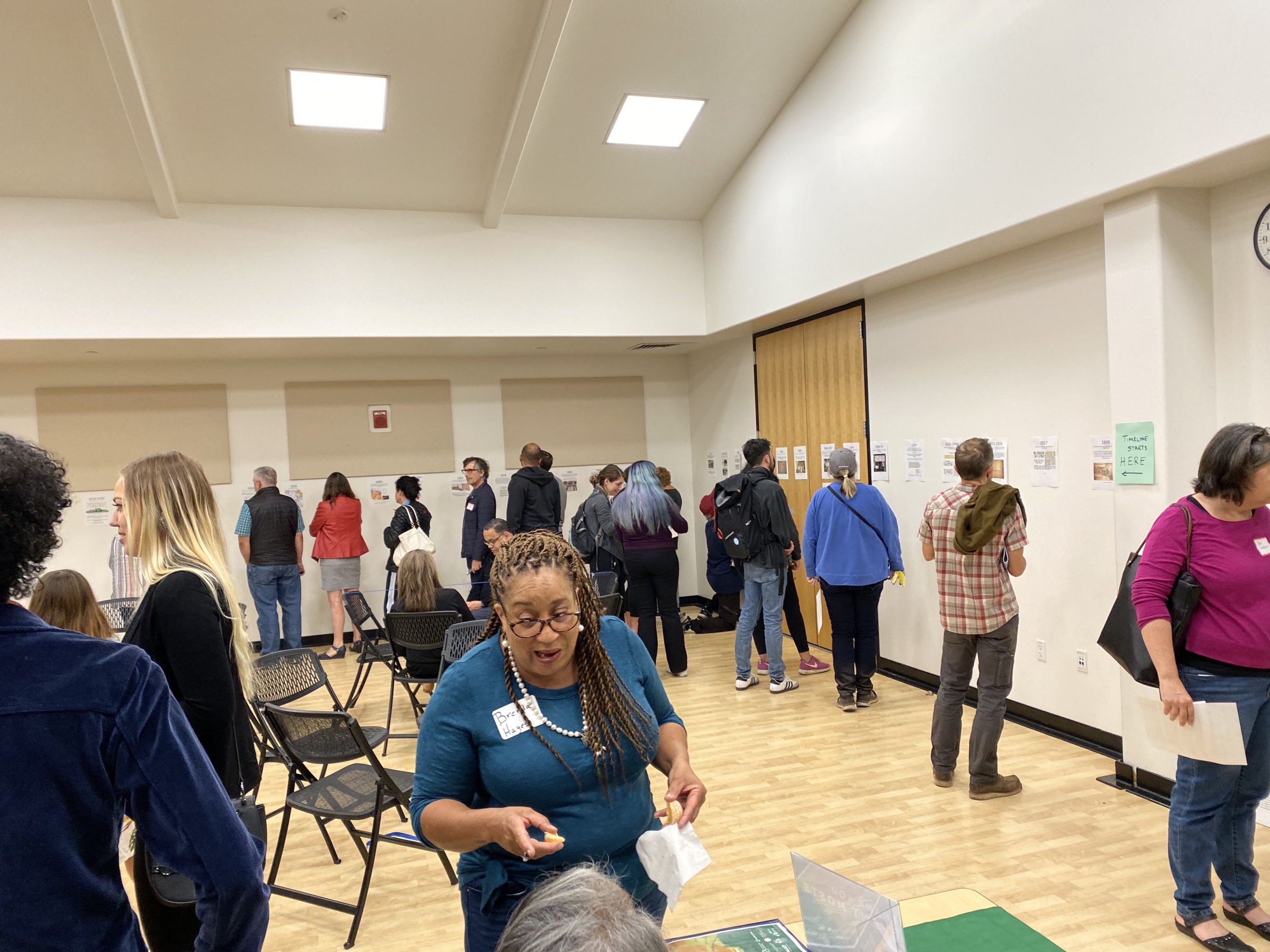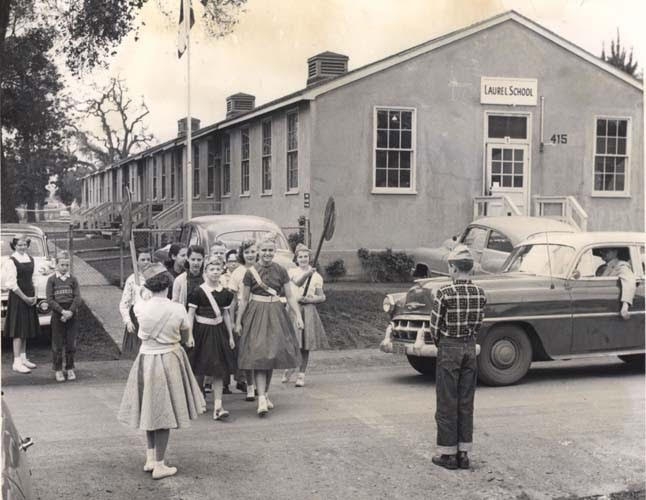On the same day that rioters stormed the U.S. Capitol in January, 180 Menlo Park City School District community members gathered on Zoom to discuss how government policies and practices in Menlo Park have led to segregation.
The discussion was part of an ongoing series, started in 2019, focused on Richard Rothstein's book "The Color of Law: A Forgotten History of How Our Government Segregated America." The workshops, put together by local nonprofits Menlo Together, a group of Menlo Park and Peninsula residents who envision a city that is integrated and diverse, multi-generational and environmentally sustainable, and Community Equity Collaborative, a group focused on education equity and early learning, highlight inequities in Menlo Park.
The Almanac spoke with organizers of these events about reactions they've gotten, epiphanies they've witnessed and why they do this work.
During workshops, organizers have touched on issues such as redlining in the 1930s, in which banks refused home loans to people because they live in an area deemed to be a poor financial risk, making loans available to "racially harmonious" communities, according to the presenters. When assessing loans, the federal government took into account risks facts such as if the home was in proximity to other homes with "freakish architectural design," the home's proximity to "nuisances" such as billboards, service stations or stables and whether the neighborhood included mixed racial or social groups.
But many residents often don't realize that there are still policies in place which help perpetuate lack of access to housing.
"We hope that this community, which is fairly liberal, yet votes against policies like affordable housing throughout the city, realize that (not supporting affordable housing) continues to contribute to segregation and economic inequity," said Menlo Together member Karen Grove. "We're helping people to connect policies to their values."
Belle Haven resident Pam Jones said some people at workshops have learned how they benefited from the redlining. For example, their family may have lived in Menlo since the '50s and passed down property that's grown in value.
"That's why history is so important; it can help us make sense of why we are where we are today," she said. She said it also can help people understand "why those people over in Belle Haven are so angry."
Shame, anger and sadness are just a few of the emotions that come up during the presentations, organizers said.
A housing covenant from the 1920s to 1940s in the Willows neighborhood, for example, restricted people of "Black, Japanese, Chinese and Mongolian descent" from living in the area unless they were residing on a property of their white employer, according to the presentation.
In 1945, Black veterans were also barred from accessing the same low-interest home loans white veterans did as part of the GI Bill.
During an in-person workshop by Menlo Together on the topic in 2019 Katie Hadrovic, a Menlo Park Library commissioner, said her jaw dropped "lower and lower" as she learned about the systemic practices created segregated communities.
"It was really powerful information that was the past of the community I live in and has powerful residuals," she said. "I don't think anyone wants to know they still currently benefit from something they abhor."
Jones said many residents come away discovering things "about your sweet little city that aren't very nice."
In 2006, many Belle Haven residents lost their homes to foreclosure after refinancing their mortgages and subprime loans in the '90s when predatory lenders went door-to-door to segregated minority neighborhoods to promote risky loans. A 2013 study found that "at the height of the housing boom, Black and Hispanic families making more than $200,000 a year were more likely on average to be given a subprime loan than a white family making less than $30,000 a year."
Jones shared during the presentation in January how barriers began to physically isolate East Palo Alto and the Belle Haven neighborhood from the rest of Menlo Park. Growing up in East Palo Alto she used to easily cross the area that is now U.S. 101 (the state widened the highway in the 1950s).
"We no longer had access because of this concrete," she said. The NAACP called the barrier the "Concrete Curtain."
It wasn't until recently that a new bike and pedestrian bridge over 101 between Newell Road and Clark Avenue in East Palo Alto now gives formerly isolated residents of the Woodland Park area easier access to the rest of the city's services on the other side of the highway.
Educational inequities persist
In 1967, the NAACP national magazine included an article about the dispute over new school district boundaries that created a mostly Black high school (Ravenswood in East Palo Alto which closed in 1976 because of declining enrollment, 18 years after it opened) and a mostly white high school (Menlo-Atherton).
When Ravenswood High shuttered, students were bused to three high schools (one was a 45 minute bus ride away). Finally, in 2013 the Sequoia Union High School District governing board voted to allow EPA to attend nearby Menlo-Atherton high school.
Belle Haven resident Deadra Lampkin of Menlo Together shared during the January workshop that her son was zoned to attend school in the Ravenswood City School District. She didn't want him to attend those district schools since she finds them to be underperforming and unsafe. He was accepted into the Tinsley Volunteer Transfer program, but he was assigned to a school in San Carlos.
The Tinsley program came about as the result of a lawsuit filed in 1976 by parents in the Ravenswood City School District and neighboring districts. The suit was settled in 1985 by requiring Peninsula school districts to transfer some minority students from the Ravenswood district into their districts each year. The Peninsula districts include Menlo Park, Las Lomitas, Woodside, Portola Valley, Palo Alto, Belmont-Redwood Shores and San Carlos.
Each district has a maximum number of Ravenswood students it must take each year. If more than the maximum apply, students are chosen by lottery.
"I tried to get him into the Menlo Park City School District and wasn't able to, so I didn't enroll him because we didn't want him on a one-hour bus ride at 7 a.m.," Lampkin said. "Being Black my son was born with one negative already. I couldn't afford to play Russian roulette with his education."
She is glad she is able to enroll him in private school.
"In order for him to get a good education, we have to pay tuition," she said. "Thank God I live with my grandmother."
Menlo Together member Karen Camacho said hearing Lampkin's story put into greater context how institutions have created inequities.
"People have really tough feelings and emotions from what they hear," Camacho said. "The summer of 2020 (after Minneapolis police killed George Floyd, an unarmed Black man, in late May) showed people we need to talk explicitly about race. We're not going to be able to address inequities until we explicitly talk about it."




Comments